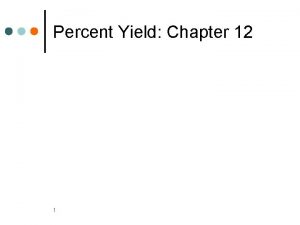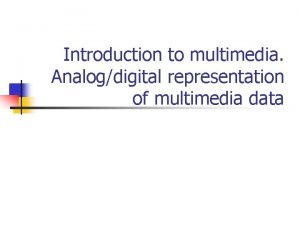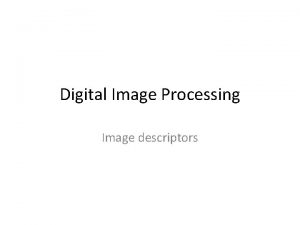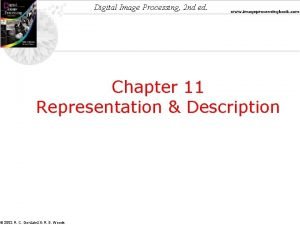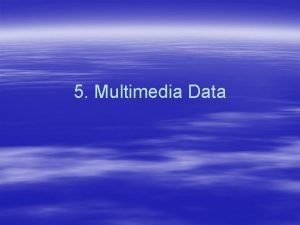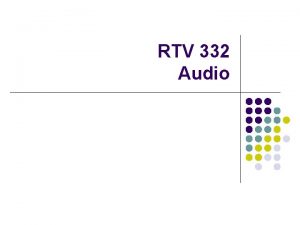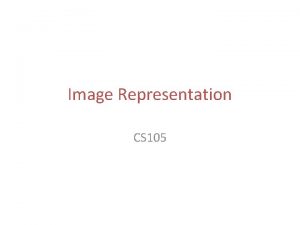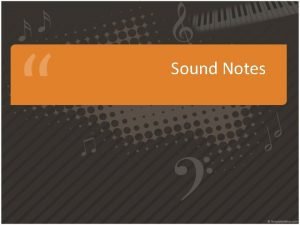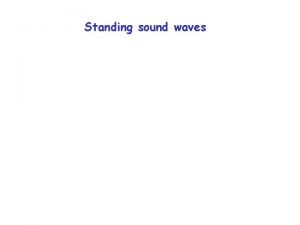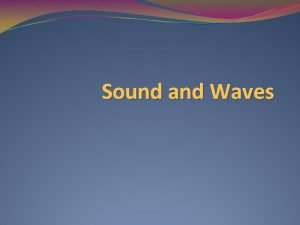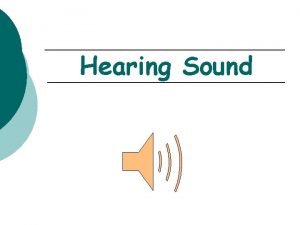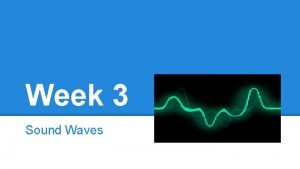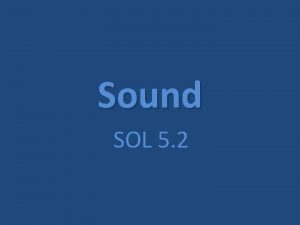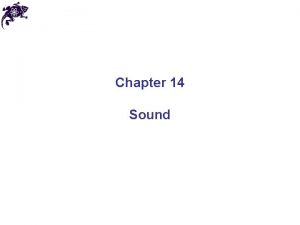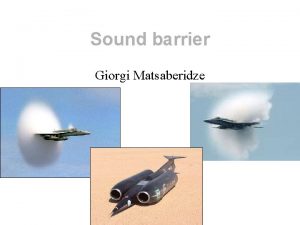Digital Sound l Actual representation of sound l














- Slides: 14

Digital Sound l Actual representation of sound l Stored in form of thousands of individual numbers (called samples) l Not device dependent l Stored in bits

Advantages of Digital Sound l Consistent playback quality l Wider selection of application software and system support for digital audio l No demand for music theory and musical scores

Disadvantages of Digital Sound l Does not allow for the manipulation of all details of composition l Huge files l Significant processor overhead

Sound Quality l Capture at highest possible quality l Determine by capabilities of target delivery platform

Sampling Rate l number of samples per second, measured in kilohertz (k. Hz) – higher sampling rate, higher sound quality

Sampling Size size in bits used to quantify the signal l types of sample size – 8 -bit – 16 -bit – larger sample size, better the data describes recorded sound l larger sample size, more "steps”are represented within dynamic range of sound l

Stereo Vs. Monophonic Sound l Stereo Sound – more lifelike and realistic – provides data in two different channels left and right – files require twice as much storage space as mono files l Monophonic Sound – tend to sound "flat" and uninteresting – only one channel

Humans l Nyquist’s Therom: l Sample rate should be twice the highest frequency l humans: – 20 Hz – 20, 000 Hz

According to Nyquist l Should sample 40, 000 times per second l In Reality samples 44, 100 Hz

Sampling Formulas l to determine the size in bits of a digital mono recording: – sampling rate * duration of recording in seconds * (bit resolutions) * 1 l to determine the size in bytes of a digital stereo recording: – sampling rate * duration of recording in seconds * (bit resolutions) * 2

File size Sample… 44, 100 : listen to sound determine volume each sample Depth (sample size) is 8 or 16 Channels: 1 or 2 Map each sample to a digit

File Size vs. Quality l Higher the sound quality, the larger the file l Record at highest sampling rate and resolution, i. e. , 16 -bit stereo, 44. 1 k. Hz

File Size l =sample Rate*number of channels *bits per sample* 60 seconds l =Ask class to figure size for l 10 seconds Assume stereo, 8 bit mono

Digital Sound File Formats l 1. AIF/AIFF (Macintosh) l 2. AU (Sun, Ne. XT) l 3. WAV (Windows)
 Actual-theoretical/actual
Actual-theoretical/actual Sanctifying grace vs actual grace
Sanctifying grace vs actual grace Representation and description in digital image processing
Representation and description in digital image processing Digital representation in multimedia
Digital representation in multimedia What is boundary descriptors in digital image processing
What is boundary descriptors in digital image processing Boundary representation in digital image processing
Boundary representation in digital image processing Multimedia data representation
Multimedia data representation For a chain code:10103322
For a chain code:10103322 “a sound mind is in a sound body”
“a sound mind is in a sound body” Speed of sound through steel
Speed of sound through steel Rtv 332
Rtv 332 Akademis digital adalah
Akademis digital adalah E-commerce digital markets digital goods
E-commerce digital markets digital goods Digital data digital signals
Digital data digital signals Data encoding and modulation
Data encoding and modulation
